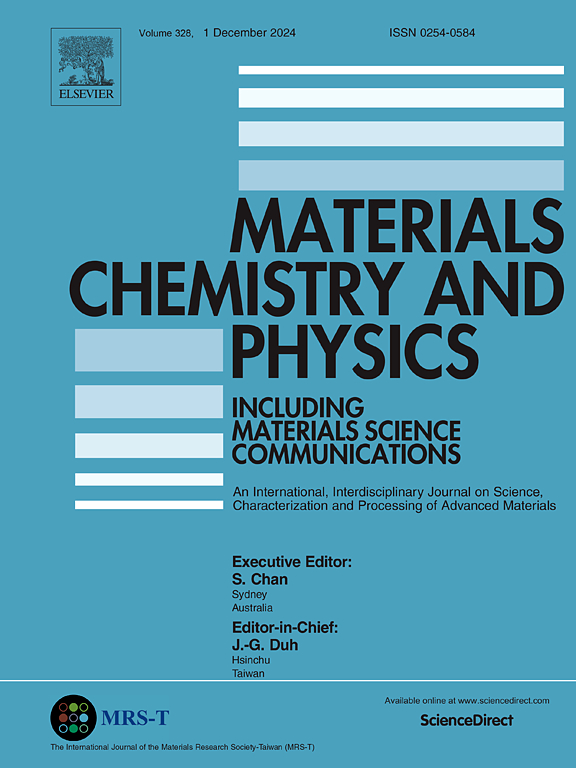一种创新的分层花状NiMo-MOF作为双功能电催化剂,增强了OER和HER性能
IF 4.7
3区 材料科学
Q2 MATERIALS SCIENCE, MULTIDISCIPLINARY
引用次数: 0
摘要
开发一种既能促进析氢反应(HER)又能促进析氧反应(OER)的双功能催化剂,对于满足子孙后代对可再生能源的需求至关重要。采用溶剂热法,以三羧酸(TMA)为有机连接剂,通过Ni和Mo金属中心的定制组合,合成了层次化的花状镍钼双金属金属有机骨架(NiMo-MOF)。在OER和HER中评价了NiMo-MOF的电催化性能。NiMo-MOF在碱性电解质中实现了10 mA/cm2的高电流密度,OER和HER的过电位分别为250 mV和192 mV, OER和HER的塔菲尔斜率分别为69 mV/dec和92 mV/dec。此外,还进行了一项时间电流测定研究,以评估NiMo-MOF对OER和HER的长期稳定性。值得注意的是,催化剂在9 h后电流密度没有明显损失,证实了所制备的NiMo-MOF具有较长的使用寿命。本研究介绍了一种新型NiMo-MOF,在OER和HER应用中具有较高的效率。本文章由计算机程序翻译,如有差异,请以英文原文为准。

An innovative hierarchical flower-like NiMo-MOF as a bifunctional electrocatalyst for enhanced OER and HER performance
Developing a bifunctional catalyst that can facilitate both hydrogen evolution reaction (HER) and oxygen evolution reaction (OER) is crucial to meet the demand for renewable energy for future generations. A hierarchical flower-like nickel–molybdenum bimetallic metal-organic framework (NiMo-MOF) was synthesized via a solvothermal method using trimesic acid (TMA) as the organic linker and a tailored combination of Ni and Mo metal centers. The resulting NiMo-MOF was evaluated for its electrocatalytic performance in both the OER and HER. The NiMo-MOF achieved high current densities of 10 mA/cm2 with low overpotentials of 250 mV for the OER and 192 mV for the HER, along with low Tafel slopes of 69 mV/dec for OER and 92 mV/dec for HER in alkaline electrolyte. Additionally, a chronoamperometry study was performed to evaluate the long-term stability of NiMo-MOF for OER and HER. Remarkably, the catalyst reveals no significant loss of current density after 9 h, confirming the long-term lifetime of the prepared NiMo-MOF. This study introduced a new NiMo-MOF that exhibited high efficiency in OER and HER applications.
求助全文
通过发布文献求助,成功后即可免费获取论文全文。
去求助
来源期刊

Materials Chemistry and Physics
工程技术-材料科学:综合
CiteScore
8.70
自引率
4.30%
发文量
1515
审稿时长
69 days
期刊介绍:
Materials Chemistry and Physics is devoted to short communications, full-length research papers and feature articles on interrelationships among structure, properties, processing and performance of materials. The Editors welcome manuscripts on thin films, surface and interface science, materials degradation and reliability, metallurgy, semiconductors and optoelectronic materials, fine ceramics, magnetics, superconductors, specialty polymers, nano-materials and composite materials.
 求助内容:
求助内容: 应助结果提醒方式:
应助结果提醒方式:


